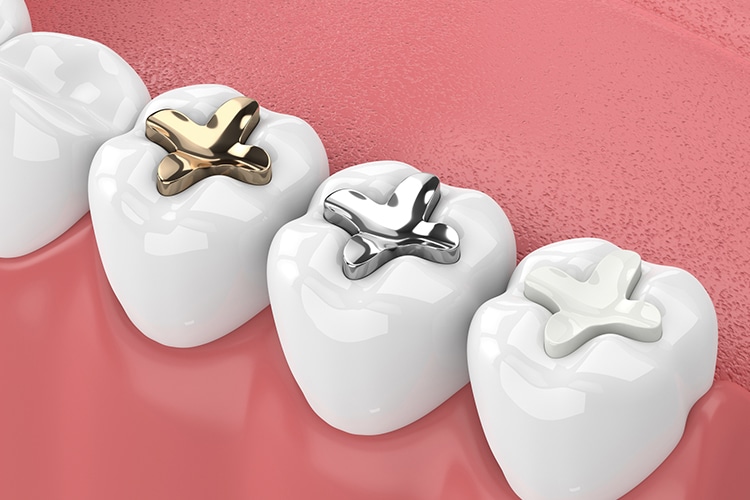Dental Hygienists Play Key Role in Hypersensitivity Treatment
Dental hygienists play an important role in the prevention and treatment of dentin hypersensitivity by providing nonsurgical periodontal therapy, placing desensitizing materials, and emphasizing good hygiene practices.

Dental hygienists play an important role in the prevention and treatment of dentin hypersensitivity by providing nonsurgical periodontal therapy, placing desensitizing materials, and emphasizing good hygiene practices. Moreover, dental hygienists may be the first to recognize the condition in patients who experience discomfort during prophylaxis appointments. As part of the health history, providers should inquire about any dental concerns, including sensitivity or possible behavior modifications that patients are using to evade pain.
Photo Credit: nuiiko/ISTOCK/GETTY IMAGES PLUS

Determining Treatment
Clinicians need to determine the cause of sensitivity in order to present the best treatment options. Toward this goal, the patient’s response to a variety of triggering stimuli—mechanical, chemical, electrical, and thermal—should be recorded. Management can involve either in-office or at-home therapy (or a combination), and these options fall under two main categories: nerve stabilization/desensitization or occlusion. Desensitizing agents may be found in certain self-care products, including tooth powders, toothpastes, mouthrinses, and chewing gum. While many desensitizing toothpastes use potassium salts, such as potassium chloride, potassium citrate, and potassium nitrate, alternative agents may include strontium acetate, arginine and calcium carbonate, calcium sodium phosphosilicate, fluoride, and other formulations.
Photo Credit: bymuratdeniz/ISTOCK/GETTY IMAGES PLUS

Fluoride and Calcium Phosphate
In high concentrations, fluoride can be effective in reducing sensitivity through application of gels and varnishes. Available in self-care products or professionally applied prophylaxis pastes and varnishes, additional therapies include calcium phosphate technologies—such as amorphous calcium phosphate, casein phosphopeptide/amorphous calcium phosphate, and calcium sodium phosphosilicate. Another calcium phosphate technology, tricalcium phosphate, provides a slow release of calcium to the tooth surface that is designed to boost the remineralizing effects of fluoride, which may also decrease sensitivity. Other desensitizing products use calcium carbonate to form occlusion with arginine to block tubules.
Photo Credit: Bet_Noire/ISTOCK/GETTY IMAGES PLUS

Oxalates
Offered for in-office and at-home treatment, oxalates have been used to block dentinal fluid flow by occluding tubules. Potassium oxalate causes crystal-like deposits inside the tubules and also reacts with calcium ions present in dentinal fluid to create insoluble calcium oxalate crystals. In addition to tubule-occluding properties, potassium oxalate may cause inhibition of intradental nerves. This may be the result of increased potassium ion concentration causing depolarization of the nerves by means of a process termed axonal accommodation. Also available is an oxalic acid, potassium salt, and water (potassium oxalate) formula that is applied on acid-etched dentin, rinsed, and left moist for bonding.
Photo Credit: nicoletaionescu/ISTOCK/GETTY IMAGES PLUS

Adhesive Systems
Adhesive systems have a long-standing or permanent effect. Adhesives include select varnishes, bonding agents, and repairing resin composites. The composites can effectively seal dentinal tubules by forming a hybrid layer. The new adhesives act in a way that the smear layer will be modified and incorporated into the hybrid layer. Also available is a desensitizing agent that includes hydroxyethyl methacrylate (HEMA), benzalkonium chloride, glutaraldehyde, and fluoride. Glutaraldehyde can lead to protein coagulation within dentinal tubules, while HEMA can cause resin tags to be formed that help occlude tubules.46 Clinicians can also choose HEMA-based desensitizing agents that do not contain glutaraldehyde, including a light-cured product.
Photo Credit: ayo888/ISTOCK/GETTY IMAGES PLUS

Laser Therapy
The effect of dental lasers for treating dentin hypersensitivity might be between 5% to 100%, depending on the type of laser and beneficial parameters, such as the laser’s length of beam, treatment time, and laser intensity. A systematic review suggests laser therapy has a slight clinical advantage over topical medicaments. Ko et al found the use of a low-level, laser-emitting toothbrush to be a safe and effective treatment for sensitivity.
Photo Credit: vmargineanu/ISTOCK/GETTY IMAGES PLUS

Treatment Decisions
Treatment decisions should be based on sensitivity severity and etiology. Some in-office therapies offer immediate relief that can be followed with at-home remedies. A combination of techniques may be warranted to provide long-term relief. An at-home regimen can be initiated with a variety of available materials to either block the tubules or reduce pain impulses. In many cases, this condition can be treated with desensitizing toothpastes. Patients should be advised, however, that clinical trials have demonstrated the use of desensitizing pastes often requires 2 weeks to 4 weeks for maximum effectiveness. If the patient’s dentin hypersensitivity is still problematic after using a desensitizing toothpaste for an appropriate interval, clinicians should consider the variety of in-office treatments.


[…] post Dental Hygienists Play Key Role in Hypersensitivity Treatment appeared first on Dimensions of Dental […]